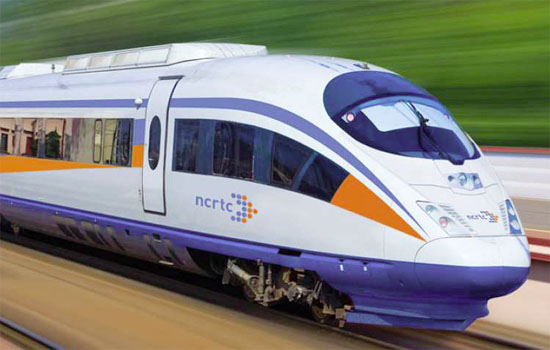RAJ. GOVT APPROVES DELHI-ALWAR HIGH-SPEED TRAIN CORRIDOR

Jaipur:Rajasthan Government on Saturday approved the detailed project report (DPR) of first phase of the Delhi-gurugram-alwar Regional Rapid Transit System (RRTS) corridor, said Sudhir Sharma, chief public relations officer, National Capital Region Transport Corporation (NCRTC).
The corridor proposes to bring down the travel time between Delhi and Alwar to 117 minutes. Currently, it takes around three hours to cover the distance by road.In the first phase, the RRTS corridor will be made from Sarai Kale Khan in Delhi to SNB (Shahjahanpur-neemrana-behror Urban Complex), Sharma added.The Haryana Government approved the corridor in February this year.
The NCRTC Board, the implementing agency for the project, approved the Delhi-gurguramsnb corridor (106 km) DPR in December 2018, said the official.In second phase, the corridor will be extended to Sotanala and it will reach Alwar in the third phase, covering a total distance of 164 km. There will be 22 stations on the corridor.In the first phase (Delhi-gurugram-snb), the corridor will have 11 stations on the elevated 71 km, and the remaining 35 km will have five underground stations, mostly in Delhi and Gurugram.
After the approval from the NCRTC Board and the Haryana government, pre-construction work like geotechnical investigation and mapping of underground utilities are in progress, the NCRTC CPRO said.The NCRTC has also commissioned its site office in Gurugram to expedite the work on the corridor. The pile load test is expected to begin soon.The RRTS trains will be airconditioned and have an average speed of 100kmph.
The trains will be available at a frequency of every 5-10 minutes. There would be priority seating arrangements for people with special needs and a business class coach and ladies coach in every train.This RRTS line will pass through the urbanised and industrialised areas of Haryana and Rajasthan and connect Delhi airport with the RRTS network, increasing the overall productivity of NCR.
The corridor will strengthen the regional transport infrastructureby providing a fast, safe, comfortable and reliable mobility option to the residents of Delhi, Gurugram, Rewari, Manesar, Daruheda, Bawal and nearby areas. This will help in decongesting Delhi and its roads, providing citizens the choice to live and work in different regional nodes.The expected cost of Delhi-gurugram-snb corridor is ₹25,000 crore. The cost will be shared among the union government and states of Delhi, Haryana and Rajasthan. The three states will share 50% of the cost, while the remaining 50% will be borne by the union government. The construction is likely to take six years.
Sharma said the NCRPB recommended 8 RRTS corridors to connect towns in the NCR with Delhi in 2011. Out of these, three – Delhi-ghaziabad-meerut, Delhi-panipat and Delhi-gurugram-snb Urban Complex (Shahjahanpur- neemrana-behror)-alwar – were chosen for the first phase of the project.Union Cabinet sanctioned the Delhi-ghaziabad-meerut RRTS corridor on February 20 this year. On March 8, Prime Minister NarendraModi laid the foundation stone of India’s first regional rail in Ghaziabad.
The three corridors will converge at Sarai Kale Khan, enabling commuters to travel end to end from one corridor to another without having to change the train. All RRTS corridors will be integrated with all the seven lines of Delhi Metro, wherever interconnecting.
Once completed, length of Delhi’s Mass transit system including DMRC and RRTS network will be 743 km, which is more than the length of London Cross rail, Hongkong MTR and Paris RER.
The RRTS is proposed to promote use of public transport and reduce vehicular pollution with less number of vehicles on roads.
© CopyRight Pressnote.in | A Avid Web Solutions Venture.






